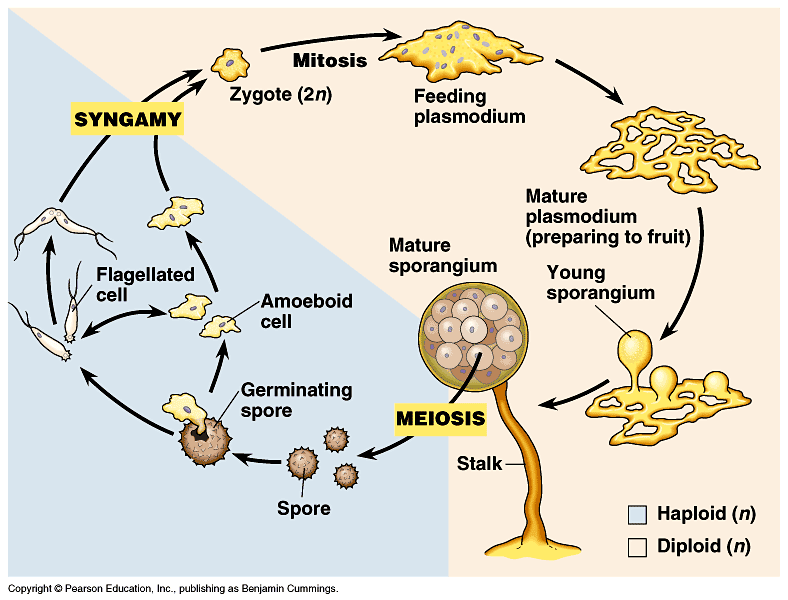Bow Chika Bow-Wow
Plasmodial Slime Mold
Reproduction:
Under favorable conditions, plasmodial slime molds reproduce by
forming a reproductive stalk containing spores. This
reproductive stalk looks spherical or even popsicle-like on top.
When the time is right, these stalks will release the spores and
new slime molds will proliferate. The time is right when there
is adequate moisture and comfortable temperatures for the slime
mold, this usually occurs in the spring and autumn.
Cellular Slime Mold Reproduction:
Cellular slime molds reproduce in much the same way as
plasmodial slime molds. There is one relatively major difference
between cellular and plasmodial reproduction, cellular slime
molds all remain individual cells with one nucleus; whereas
plasmodial slime molds are one huge cell with millions of
nuclei. The individual cellular slime molds, also called
"slugs," crawl along the substrate at a mind-blowing 1
millimeter per hour (on average) leaving behind a trail of
chemicals which draws other slugs toward it. As more and more
slugs travel over this trail, the chemical becomes stronger
drawing in even more. Eventually all of the slugs aggregate at a
point and become a pseudoplasmodium (fake plasmodium). They are
a "pseudoplasmodium" because all of the cells remain
individuals, they are just clustered together. As the slugs
aggregate, about a third of the cells come together to produce a
stalk-like fruiting body. Other cells are then transformed into
spores, which are inside the fruiting body. When the moisture
levels and temperatures are just right, the spores are released
and cellular slime molds are "born."

Return Home
Or check out slime mold Interactions